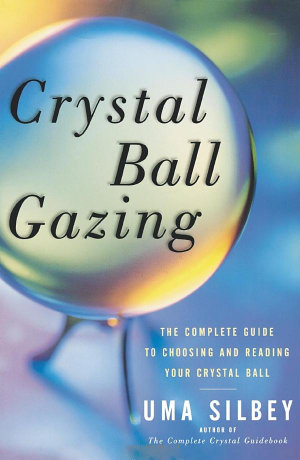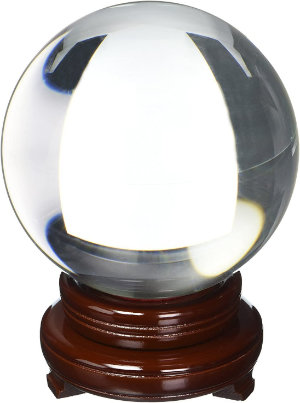
Crystal balls have captivated the human imagination for centuries. These spherical objects, often made of transparent stone or leaded glass, have been associated with fortune-telling, divination, and spiritual practices. While their origins and uses have evolved over time, the allure of crystal balls remains strong in our modern world. In this article, we will explore the fascinating history, uses, and benefits of crystal balls, shedding light on their mystical power.
Origins and History of Crystal Balls
Crystal balls have a rich history that spans different cultures and time periods. The use of crystal balls for divination and scrying can be traced back to ancient civilizations such as the Romans and the Druids.
Use in Ancient Egypt
The ancient Egyptians believed that crystal balls, made from quartz, had magical properties that could be harnessed for both spiritual and practical purposes. They used crystal balls for divination, healing, navigation, and communication with the gods.
The use of crystal balls for divination was particularly important in ancient Egypt. Oracles and seers would use the crystal balls to gain insight into the future and receive messages from the gods. They believed that the crystal ball acted as a portal between the physical world and the spiritual realm, allowing them to receive guidance and wisdom from the divine.
One of the most famous examples of crystal ball divination in ancient Egypt is the story of Pharaoh Thutmose III. According to legend, Thutmose was seeking guidance from the god Amun about his upcoming battle with the Mitanni. He consulted with his oracles, who used a crystal ball to communicate with the god. Amun appeared in the crystal ball and gave Thutmose advice that ultimately helped him win the battle.
Crystal balls were also used for healing in ancient Egypt. They believed that the quartz had powerful healing properties that could be used to treat a variety of ailments. Healers would place the crystal ball on the affected area of the body, and the vibrations from the quartz would help to heal the patient.
In addition to their spiritual and healing properties, crystal balls were also used for practical purposes in ancient Egypt. They were used as a navigational tool for sailors, who would use the crystal ball to determine their location based on the movement of the sun and stars.
The use of crystal balls in ancient Egypt was not limited to the ruling class. They were also used by everyday people for divination and spiritual purposes. Amulets and talismans featuring small crystal balls were popular among the general population, who believed that they offered protection and guidance from the gods.
Crystal Balls in Ancient Rome
The Roman Empire embraced the practice of crystal gazing, with references to crystal balls appearing in the works of Pliny the Elder. These early crystal balls, known as “crystallum orbis” or “orbuculum,” were used by soothsayers and fortune-tellers. However, the rise of Christianity led to the condemnation of crystal gazing as a heretical practice.
In ancient Rome, they were typically made of quartz and were believed to have magical properties. They were used to predict the future, communicate with the gods, and even heal the sick. The Romans believed that the crystal ball was a direct connection to the divine and that by looking into it, they could see the future.
Crystal balls were used by many different people in ancient Rome. The most famous users were the oracles, who were priests and priestesses of the gods. They would use the crystal ball to communicate with the gods and receive messages from them about the future. The most famous oracle in ancient Rome was the Oracle of Delphi, who used a crystal ball to communicate with the god Apollo.
Crystal balls were also used by seers, who were individuals with the ability to see into the future without communicating with the gods. They would use the crystal ball to focus their visions and gain insight into what was to come. Seers were highly respected in ancient Rome, and their predictions often influenced important decisions made by the ruling class.
Healing was another use of crystal balls during these times. The Romans believed that the crystal ball had the power to heal the sick and cure diseases. They would place the crystal ball on the affected area of the body and focus their energy on the ball, believing that it would transfer healing energy to the patient.
The use of crystal balls in ancient Rome was not limited to the spiritual and healing realms. They were also used for practical purposes, such as navigation. The Romans were skilled navigators and used crystal balls to help them navigate at night. They would place the crystal ball on a stand and focus the light from a nearby fire onto the ball. The light would be reflected in the ball, creating a bright and visible light that could be used to guide their ships.
Crystal Balls in Chinese Culture
Crystal balls hold cultural significance in Chinese culture, particularly in ancient times. The Qing dynasty is known for possessing one of the largest crystal balls, the Dowager Empress Crystal Ball, weighing 49 pounds. Crystal balls were valued for their beauty, believed to bring good fortune, and were associated with the mystical traditions of ancient China.
Druidic Scrying
During the third to fifth century CE, the Druids of the British Isles utilized crystal balls and other reflective surfaces for scrying. These ancient Celtic priests sought to uncover secrets and gain insights into the past, present, and future. The Druidic tradition of crystal gazing faded with the Roman conquest of Britain but left behind a legacy that would resurface in later centuries.
Druids were prevalent in Ireland, Scotland, and Wales during this time. They were known for their deep connection to nature and their ability to communicate with the spiritual world. The use of crystals and crystal balls was an integral part of their practices.

Druids believed that the ball acted as a portal between the physical world and the spiritual realm, allowing them to gain insight and receive messages from the divine. The crystal ball was used in conjunction with other divination tools, such as tarot cards or runes, to provide a more complete reading.
In addition to divination, druids also used crystal balls for healing purposes. They believed that the crystal could absorb negative energy and promote healing in the body. The crystal ball was often placed on the body or held in the hands during healing rituals.
The use of crystal balls was also important in druidic ceremonies and rituals. The balls were often placed on altars and used as a focal point during meditation and prayer. The druids believed that the crystal ball helped to amplify their intentions and connect them to the spiritual world.
The balls were used as a tool for scrying, which is the practice of gazing into a reflective surface to gain insight or knowledge. Druids would use the crystal ball to scry for guidance in their daily lives, or when navigating through unfamiliar territory.
Middle Ages and Renaissance
Throughout the Middle Ages, crystal balls took on a more decorative role in Europe. However, hidden from the watchful eyes of the Church, some individuals continued to practice crystallomancy. The Renaissance period marked a resurgence of interest in crystal gazing, thanks in part to influential figures like John Dee. Dee, an advisor to Queen Elizabeth I, used an obsidian crystal ball for scrying and believed he could communicate with angels and demons through the sphere. This royal endorsement brought crystal balls back into the spotlight.
“Gypsy” Fortune Tellers
As crystal gazing gained popularity in the Renaissance era, it became closely associated with the Roma people, also known as gypsies. These nomadic communities, carrying their traditions from India to Europe, incorporated crystal balls into their repertoire of fortune-telling practices. Crystal balls became a symbol of the Romani culture and their mystical abilities.
Roma fortune-tellers, known as drabardi, use crystal balls along with cards to seek knowledge about future events. The gypsies believed that crystal balls acted as a portal between the physical world and the spiritual realm, allowing them to connect with the divine and gain insight into the future.
The use of crystal balls by gypsies has its roots in the Middle Ages when crystal balls were symbols of power and class status. They were also believed to be magic talismans to ward off evil and sickness. The Europeans were already aware of crystal balls, and the gypsies saw an opportunity to use them to predict the fortunes of their customers. They believed that the crystal ball’s reflective and translucent surface could reveal hidden knowledge about the future.
The art of scrying, or gazing into a reflective or translucent surface to gain prophetic insight, has been practiced for centuries. The gypsies believed the crystal ball’s spherical shape and optical properties as a spherical lens made its image-forming characteristics omnidirectional, allowing the gypsies to see visions of the past, present, and future.
In modern times, the use of crystal balls by gypsies may be viewed as a form of entertainment or a novelty act.
Crystal Balls in the 19th Century and Beyond
The Victorian era witnessed a renewed fascination with the occult, and crystal balls experienced a revival. Spiritualism and divination practices, including crystal gazing, gained popularity among the upper classes. Stage performers like Claude Conlin, known as “Alexander, the Man Who Knows,” captivated audiences with their crystal ball tricks and mentalist acts. In the 20th century, famous psychics like Jeane Dixon used crystal balls to make predictions, further cementing their place in popular culture.
What Are Crystal Balls?
Crystal balls come in various sizes and materials, but they all share the characteristic of being spherical. These objects can be made of just about anything including glass, leaded glass, quartz, beryl, calcite, obsidian, or amethyst. The most important aspect of a crystal ball is its flawless finish and highly-polished surface, which allows for optimal reflection and scrying.
The Art of Crystallomancy
Crystallomancy, or the art of using crystal balls for scrying or gazing, has been practiced for centuries. It involves looking into the reflective surface of the crystal ball to receive visions, insights, and messages from the spiritual realm. While the scientific validity of crystallomancy is not proven, many believers find value in the practice for personal guidance and spiritual growth.
How to Use a Crystal Ball for Scrying
To effectively use a crystal ball for scrying, one must create a conducive environment and cultivate a receptive state of mind. Here are some steps to get started:
- Choose the right crystal ball: Select a crystal ball that resonates with you and feels energetically aligned. Consider the size, material, and reflective qualities of the sphere.
- Cleanse the crystal ball: Purify the crystal ball by using methods such as smudging with sage, bathing it in moonlight, or visualizing cleansing energy flowing through it.
- Set the scene: Find a quiet and dimly lit space where you can focus without distractions. Create a relaxing atmosphere through candles, incense, or soothing music if desired.
- Relax your body and mind: Take deep breaths, release tension, and enter a state of relaxation. Clear your mind of any clutter or preconceived notions.
- Establish a connection: Hold the crystal ball in your hands and establish a connection with its energy. Send your intentions and energy into the sphere, forming a bond between you and the crystal.
- Ask a question or set an intention: Formulate a clear question or intention that you seek guidance on. You may speak it aloud or hold it in your mind.
- Gaze into the crystal ball: Direct your gaze into the reflective surface of the crystal ball, not focusing too intensely but allowing your vision to relax. Be open to any images, symbols, or impressions that may arise.
- Interpret the visions: Trust your intuition and allow the visions to unfold naturally. Reflect on the images and symbols that emerge, considering their potential meanings and messages.
- Conclude the session: When you feel ready, gradually shift your focus away from the crystal ball. Express gratitude for the insights received and take note of any significant impressions or guidance.
- Reflect and integrate: After a scrying session, take time to reflect on the messages received and consider how they can inform your decisions and actions in life. Integrate the wisdom gained from the experience.
The Uses and Benefits of Crystal Balls
Crystal balls offer a range of uses beyond scrying and divination. Their properties and energy can be harnessed for various purposes, including meditation, crystal healing, and spiritual alignment.
Meditation

Crystal balls can enhance meditation practices by providing a focal point for concentration and visualization. Holding or placing a crystal ball in your presence during meditation can create a serene and reflective atmosphere. The light-filled and mirror-like qualities of crystal balls can induce a hypnotic state and facilitate a deeper connection with the universe.
Crystal Healing
Crystal balls, particularly those made from crystals, can be used for healing purposes. By holding or placing a crystal ball on specific chakras or areas of the body, one can tap into the crystal’s energetic properties to promote balance, release blockages, and facilitate emotional and physical healing. Crystal balls can also be utilized during energy healing sessions, such as Reiki, to amplify the healing energy.
Spiritual Connection
Crystal balls serve as potent tools for spiritual seekers, aiding in the development of intuition, psychic abilities, and spiritual connection. By attuning to the energy of the crystal ball, individuals can fine-tune their intuitive faculties and expand their awareness of the subtle realms. Crystal balls act as conduits, helping to bridge the gap between the physical and spiritual dimensions.
Crystal Ball FAQs
Where should you place a crystal ball in your home?
Crystal balls can be placed in various locations within your home, depending on the intention and energy you wish to cultivate. Some common placements include the center of the home, bedrooms for lucid energy, or on altars for spiritual practices. According to Feng Shui principles, specific areas of the home may benefit from the presence of a crystal ball to enhance positive energy flow.
How do you acquire a crystal ball?
Crystal balls can be obtained from various sources, including new-age stores, metaphysical shops, and online retailers specializing in crystals and spiritual tools, and even on sites such as eBay and Amazon. When acquiring a crystal ball, it is important to trust your intuition and choose one that resonates with you. Consider the size, material, color, and overall energy of the crystal ball before making a purchase.
Since local stores that carry a variety of crystal balls in stock are rare, many people choose to purchase their first one online such as one of these, then use that to figure out what they do and don’t like.
What color should a crystal ball be?
Crystal balls come in various colors, each with its own energetic properties and associations. Clear quartz crystal balls are highly reflective and versatile, often used for general scrying purposes. Obsidian crystal balls, with their deep black color, are prized for their grounding and protective qualities. The choice of color depends on personal preference and the specific energies one seeks to work with.
What is the difference between a crystal ball and a seeing ball?
Crystal balls are often made of crystal or glass, possessing a reflective surface that aids in scrying. Seeing balls, on the other hand, may be made of glass but lack the same transmuting properties as crystals. While both can be used for divination and scrying, crystal balls are believed to possess a greater connection to spiritual energies.
Unveiling the Secrets Within the Crystal Ball
Crystal balls remain intriguing symbols of mystery and insight, bridging the realms of the seen and the unseen. Throughout history, these spherical objects have been utilized by ancient civilizations, spiritual seekers, and fortune-tellers alike. While the scientific validity of crystal gazing may be questioned, the personal experiences and spiritual connections forged through the use of crystal balls continue to captivate and inspire. Whether you seek a glimpse into the future, a deeper understanding of yourself, or a connection to the spiritual realm, the crystal ball holds the potential to unlock the secrets within.



